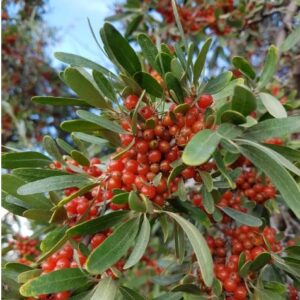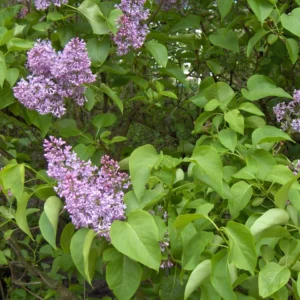Description
Black Cherry Tree (Prunus serotina) 1 Yr Old Seedling
Overview
The Black Cherry (Prunus serotina) is a fast-growing native tree prized for its fragrant spring blossoms, edible fruit, and valuable hardwood. Commonly found in forests and open fields across North America, it is an excellent choice for wildlife support, ornamental planting, and timber production.
Native Range
The Black Cherry is native to most of the eastern United States and parts of Canada, thriving in diverse habitats from upland forests to riverbanks. Its natural range extends as far west as the Great Plains and south into Mexico.

Growth and Form
- Height: Black Cherry trees typically grow 50–80 feet tall, with some specimens reaching 100 feet in ideal conditions.
- Spread: The tree forms an oval to pyramidal canopy with a spread of 30–50 feet.
- Growth Rate: A fast grower, with an average increase of 2–4 feet annually under favorable conditions.
- Foliage: Glossy green leaves turn attractive shades of yellow to red in the fall, adding seasonal interest.
- Bark: Dark gray to black bark develops scaly, textured plates resembling “burnt potato chips” as the tree matures.
- Flowers: Fragrant white blossoms appear in long clusters in spring, attracting pollinators like bees and butterflies.
- Fruit: Produces small, dark cherries in late summer that are enjoyed by birds and can be used in jams and jellies.
This combination of rapid growth, ornamental appeal, and ecological value makes the Black Cherry a standout species.
Ecological Benefits
- Wildlife Habitat: Black Cherry supports diverse wildlife. Birds, deer, and small mammals feed on its fruit, while pollinators visit its flowers.
- Erosion Control: Its deep root system helps stabilize soil on slopes and along waterways.
- Biodiversity Support: The tree hosts numerous butterfly and moth species, contributing to local ecosystems.
Hardiness and Climate Tolerance of the Black Cherry Tree
- Hardiness Zones: 3–9, making it suitable for a wide range of climates.
- Drought Tolerance: Moderate drought tolerance once established, but prefers consistent moisture for optimal growth.
- Soil Adaptability: Thrives in well-drained soils but tolerates sandy, loamy, and even rocky conditions.
Black Cherry Tree Planting and Care
- Planting Location: Prefers full sun for best growth and fruit production but tolerates partial shade.
- Soil Preparation: Requires well-drained soil with good organic matter. Avoid overly wet or compacted areas.
- Watering: Water young trees regularly during the establishment period. Mature trees are moderately drought-tolerant.
- Spacing: Space trees 30–40 feet apart to allow for their mature size.
- Pruning: Prune in late winter to maintain shape, remove deadwood, and promote healthy growth.
- Fertilization: A balanced fertilizer can be applied in early spring to enhance growth in poor soils.
Potential Problems
- Black Knot Disease: A fungal infection that causes black swellings on branches. Prune and dispose of infected areas promptly.
- Pests: May be affected by tent caterpillars or aphids, though these rarely cause serious damage.
- Deer: Young Black Cherry trees may require protection from browsing deer.
Uses
- Ornamental Landscaping: Its showy blossoms, fall color, and elegant form make it a popular choice for home gardens and public spaces.
- Wildlife Planting: Ideal for creating habitats that support birds, pollinators, and small mammals.
- Timber and Crafting: The wood is highly valued for its rich color, fine grain, and durability, often used in furniture and cabinetry.
- Fruit Production: The small cherries can be harvested for use in syrups, jams, and even homemade liqueurs.
Propagation of the Black Cherry Tree
- Seed Propagation: Requires cold stratification to break dormancy. Sow seeds in the fall or stratify and plant in spring.
- Cuttings: Hardwood cuttings can be rooted, though this method is slower than propagation by seed.
Conclusion
The Black Cherry Tree is a versatile and attractive addition to any landscape. Whether for its blossoms, fruit, or timber, this fast-growing native tree offers ecological and economic benefits, making it a valuable choice for homeowners, landowners, and conservationists alike.






Reviews
There are no reviews yet.